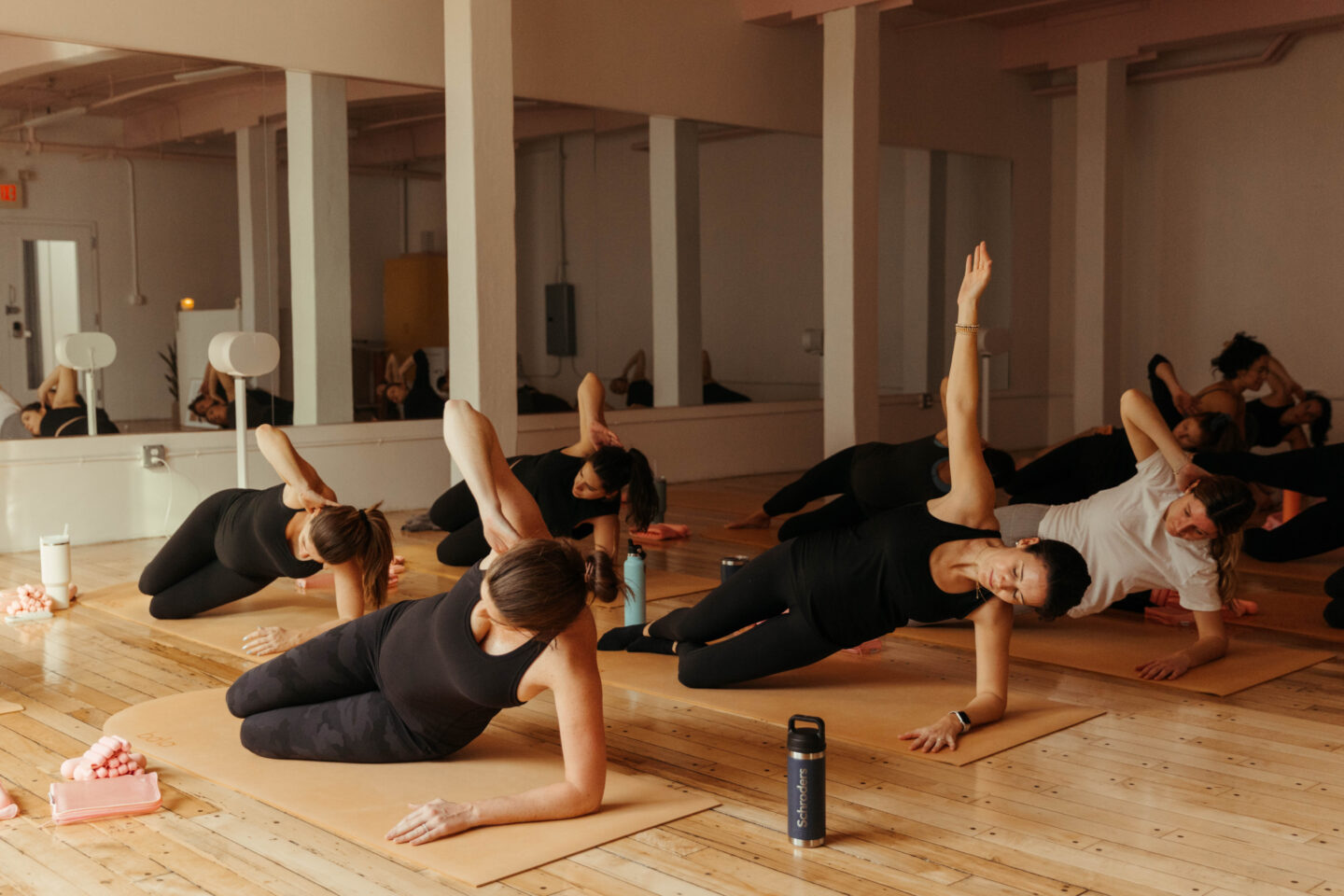Strengthening your core is one of the most important things to focus on during pregnancy.
Pre-pregnancy, we look to planks as a quick, direct way to work our core while engaging our entire body. During pregnancy, we need to reevaluate why we’re even planking in the first place. While we wish the answer was as easy as “yes, do it!” or “no, definitely don’t,” everyone’s body is different, so unfortunately, there is no one-size-fits-all answer to this question.

However, you absolutely do reach a point in pregnancy where just because you can hold a plank doesn’t mean you should.
Your pre-pregnancy activity levels are only a small factor in your ability to tolerate planks during your pregnancy. Alignment, torso size, baby size (and location!), daily physical stressors, gravity, and hormones are a few variables that also affect your ability to tolerate planks during pregnancy.
First and foremost, to plank safely and effectively during pregnancy, you need to understand and connect to the proper breath mechanics. You must be able to access and engage your transversus abdominis muscle ( (TVA) muscle, part of your deep core. Your TVA is the deepest layer of your core and helps provide stability and manage pressure.
Planking is what we call an “anti-extension movement.” These types of movements tax the anterior core muscles. During pregnancy, this outermost layer of your core is already enduring an excessive amount of stress and managing a lot of IAP (intra-abdominal pressure) due to your growing belly. Planks increase IAP, and excessive IAP can exacerbate Diastasis Recti (the separation of your abdominal wall) and can lead to other unnecessary aches and pains in your changing structure. Therefore, planking should be regressed as pregnancy progresses to minimize stress on the external abdominal wall.
In your second trimester, you need to begin to monitor your full plank (front and side). Check for coning in the belly and check for loss of neutral trunk position. Keep an eye on back/hip pain. While some pregnant women need to regress full center planks, they might be able to tolerate a full side plank. For others, it might be the opposite. For example, it is typically advised to modify planks in the second trimester by taking them to an incline position or dropping them to the knees. Another great option is dropping to a strong all-4s position with or without a ball squeeze between the legs. From there, you can add a knee hover if you’re able to maintain proper form and alignment.
By your third trimester – full-center planks should be avoided. The direct downward-facing pressure on the abdominal wall is too great and simply unnecessary (your postpartum body will thank you!!). Most people will also need to avoid full-side planks given the increase in IAP, which these typically elicit as well. If you can tolerate it, it’s advised to continue planking on your side with one or both knees on the ground for extra support.
Your postpartum recovery starts during your pregnancy. The choices you make during your prenatal workouts directly impact your postpartum body. More often than not, towards the mid/end of their pregnancy, most pregnant women are forcing themselves to continue doing full planks for their ego, not for the actual benefit of the exercise.
Ultimately, if you’re able to tolerate a plank, it is safe to do during your pregnancy. However, after a certain point, it’s important to evaluate WHY you are planking – if it’s to have a strong core during pregnancy, there are plenty of more effective exercises than a plank to focus on to strengthen the abs during your pregnancy!
Follow PUSH on Instagram!




